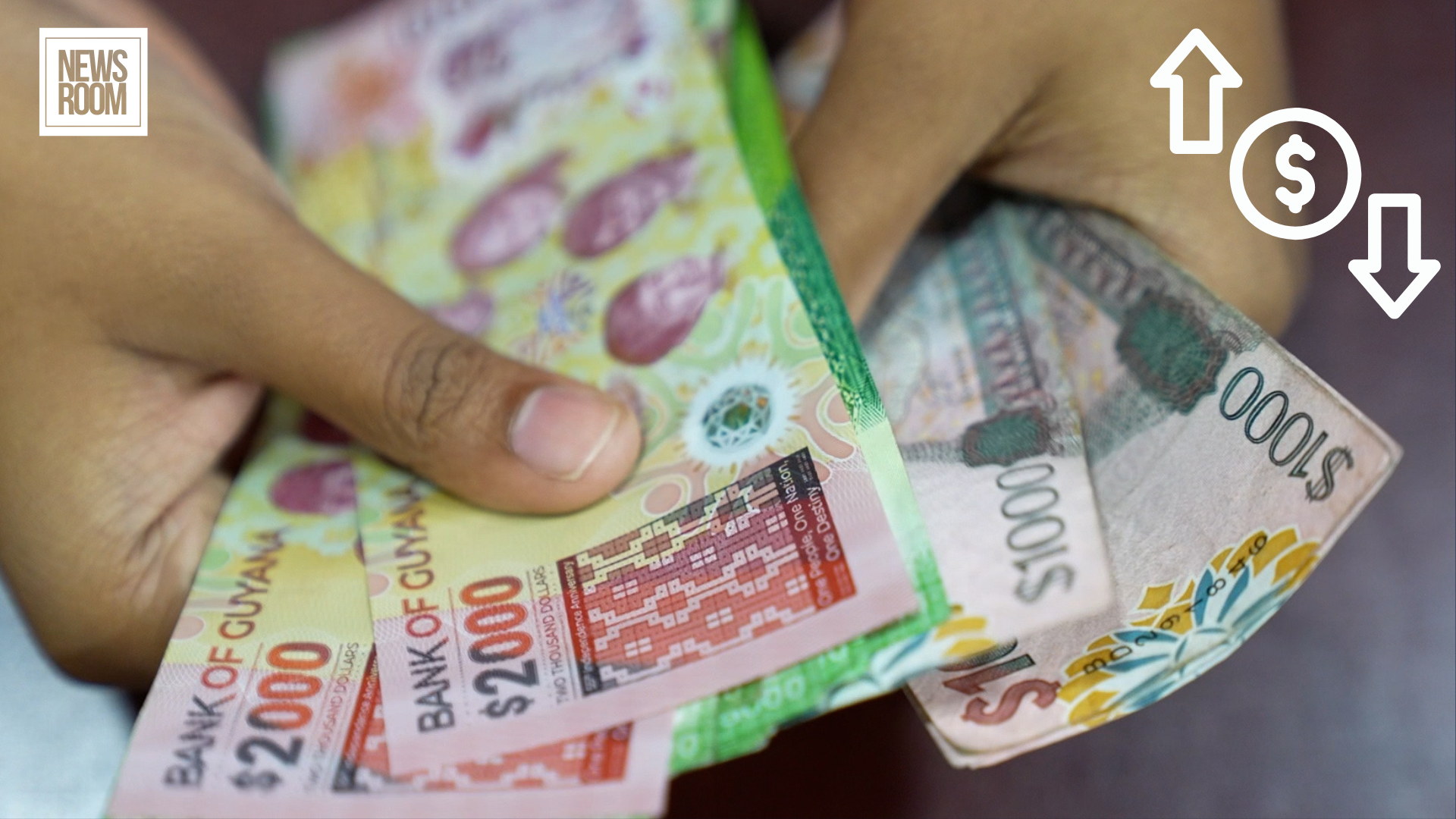By Vishani Ragobeer
Guyana is experiencing substantial economic growth and as such, there has been the expectation the value of the Guyanese dollar should increase. President Dr. Irfaan Ali has, however, cautioned against doing that – at least in the short term.
“It has severe implications and it is something we have to guard against,” the Head of State said recently, in response to a question posed by a member of Guyana’s diaspora in Los Angeles.
He added that if the currency changes “overnight”, there will be rapid changes in the cost of items.
Several days later, at a press conference, Vice President Dr. Bharrat Jagdeo also said that the government has to “guard against strengthening the Guyanese dollar too quickly” since that may render exports uncompetitive.
Increasing the value of the dollar refers to an appreciation of the currency. The increase of the currency is measured against another currency; for example, increasing the Guyanese dollar against the United States (US) dollar.

Governor of the Bank of Guyana (BoG) Dr. Gobind Ganga, on Tuesday, explained to the News Room the implications of increasing the value of the Guyanese dollar over a short period.
“…that will cause import prices to be reduced but at the same time, our export earnings will decline in Guyana dollar terms and most of our expenses, especially labour expenses and other factors that are used in Guyana dollars, will remain the same,” Dr. Ganga told the News Room.
To illustrate this, he used the example of the exchange rate between Guyana and the US.
If some Guyanese export – be it sugar, rice, gold or otherwise – is sold for US $1 million, the amount received would equate to about GY $215 million using an exchange rate of GY $215 to US $1.
Dr. Ganga, however, noted that if the currency appreciates and there is an exchange rate of GY $210 to US $1, the country would earn GY $210 million instead.
Essentially, if the value of Guyana’s currency increases – that is, fewer Guyana dollars will be needed in exchange for a higher valued currency like the US dollar – the money raked in from exports will decrease.
Though the cost of imports will reduce with an appreciation of the currency, the Central Bank Governor explained that the country’s expenses may not readily decline.
“So you will have major problems filling that gap with the shortfall, which means that you may be in a loss situation,” he said.
But it is not an entirely dire outlook.
Dr. Ganga explained that if the country is able to increase production, it would be able to “make up” for the money exchange.
That, coupled with the lower costs of imports, would prove beneficial for the country.
Considering the pros and cons, however, the Governor said Guyana has maintained a “relatively stable” exchange rate over the past two decades. This has helped cushion locals from inflation (price hikes).
In a recent statement, the International Monetary Fund (IMF) noted that exchange rate stability best services Guyana’s current needs. As Guyana becomes a major oil producer in the medium to long term, however, the IMF supports a revision of the country’s monetary policy framework.
Similar sentiments were echoed by the Central Bank Governor.
“We have to do that [increase the value of money] over a long term.
“Monetary and exchange rate policies are very important, they are critical for the growth and development of a country,” Dr. Ganga explained.














good job